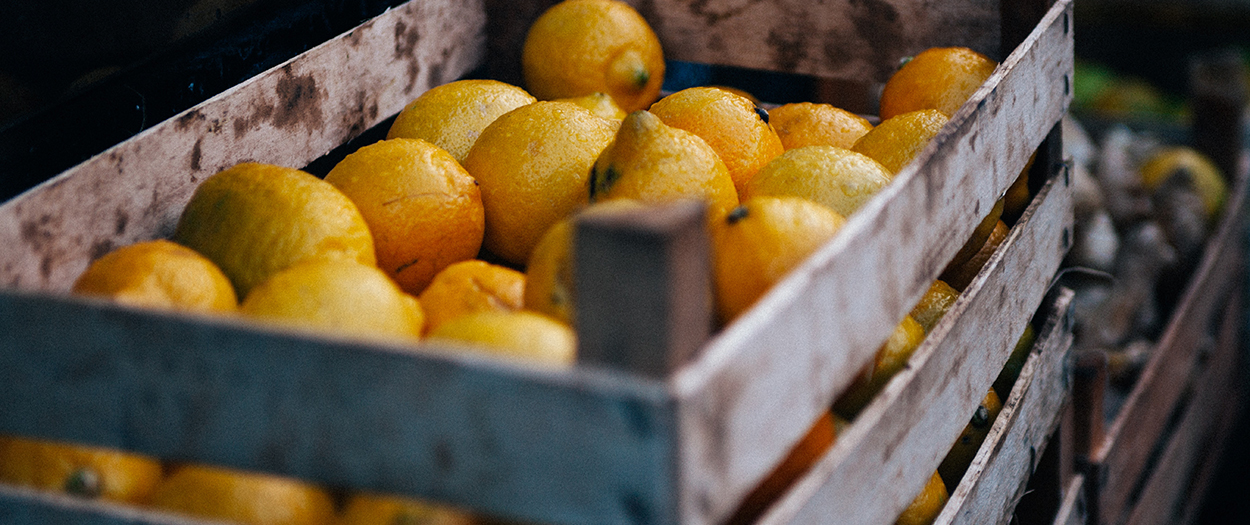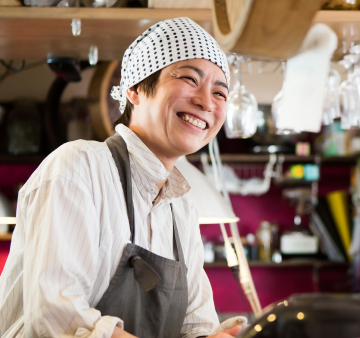How to know when you should replenish your stock at a good price
DISH
February 2021

No one knows exactly what will happen after the reopening. Hopefully your guests will flock to your restaurant again. But how do you prepare for this? Should you take the precaution of stocking up now – especially since the basis for negotiation with suppliers, who are also in trouble, is quite good – or should you wait and see?
In the pre-Corona era, a cursory glance at the stock was enough for most restaurateurs to decide for or against restocking. But that has changed. The more goods you store in your warehouse, the more capital you tie up – and the less liquidity you retain.
Ideally, you should store enough goods that you will use completely within a certain period of time. The mostly perishable goods stay fresh, you have little loss, and your capital has “worked properly”. But how do you know whether you have too much or too little in stock? There is a key figure that gives you transparency and helps you make decisions.
How often does your warehouse “turn” in a month?
If you meticulously observe your inventory turnover and understand how often your warehouse “turns” (how many goods are in your warehouse on average), you can optimise your use of goods over a longer period of time. Information about this is provided by the somewhat unwieldy-sounding key figure “inventory turnover”.
The video is an excerpt from the webinar on supplier management by gastronomy expert Jens Ertel. Jens uses an example to explain how to calculate the inventory turnover rate and what other key figures you should pay attention to (German only).
You can get to the inventory turnover rate key figure through various calculation steps. First, you determine the target food stock.
TARGET food stock = opening stock (inventory) + goods value receipts (purchase) – goods value issues (consumption)
1. You add the value of the goods purchased since then to the value of the goods determined in the last inventory.
2 a.) Subtract your actual consumption since the inventory from this sum. You determine the actual consumption by multiplying the sum of the sold articles from the cash register with their goods value from the recipes.
2 b.) The complicated alternative: Multiply your net turnover by your “target FOOD COST”. The TARGET FOOD COST is the percentage ratio between the value of goods of the dish x 100 and the net sales price. Simplified you can calculate with a guideline value of 26 percent. You can find your value in your BWA if you put your purchases of goods “FOOD” in the percentage ratio to the net turnover of “FOOD”. (The formula for this is: Purchase of goods FOOD x 100 divided by the net turnover FOOD).
The “average inventory amount” helps with long-term planning
Every month is a little different. In order to arrive at an average value with which you can plan better, you now calculate the “average inventory amount”:
Average inventory amount = opening stock (inventory) + target food stock / 2
- You take the opening stock determined in the inventory and add the target food stock calculated earlier.
- From the sum you calculate the arithmetic mean (this sounds more complicated than it is; you simply divide the sum by the number of numbers you have added up – in this case half of the sum).
Finally a better overview with the inventory turnover rate
With the average inventory amount you can finally calculate the key figure with which you find out how well you have your warehouse under control:
Inventory turnover = number of articles x recipes / average inventory amount.
Divide the value of goods issued (usually from the cash register “number of articles x recipes”) by the average inventory amount. You get the key figure “inventory turnover”.
The higher the value of the stock turnover rate, the better your stockkeeping. The value “1” would mean that you consume as much as you have in stock over the selected period. A high value also signals that you have significantly less loss of goods due to shrinkage or expired best-before dates. You tie up exactly as much capital in the warehouse as you need.
If the value of the key figure is less high, you can adjust it in various ways. For example, you can optimise the use of goods by changing recipes with DISH MenuKit. You could also change the delivery conditions with your supplier (payment of goods only upon sale).
At first glance, the path to the key figure may not seem very attractive to non-mathematics students. If you need help, you can also work it out with Jens Ertel.
About the author
DISH


Increase your profit margins. Keep all your recipes in one place. Work out your prices quickly. Improve results.








